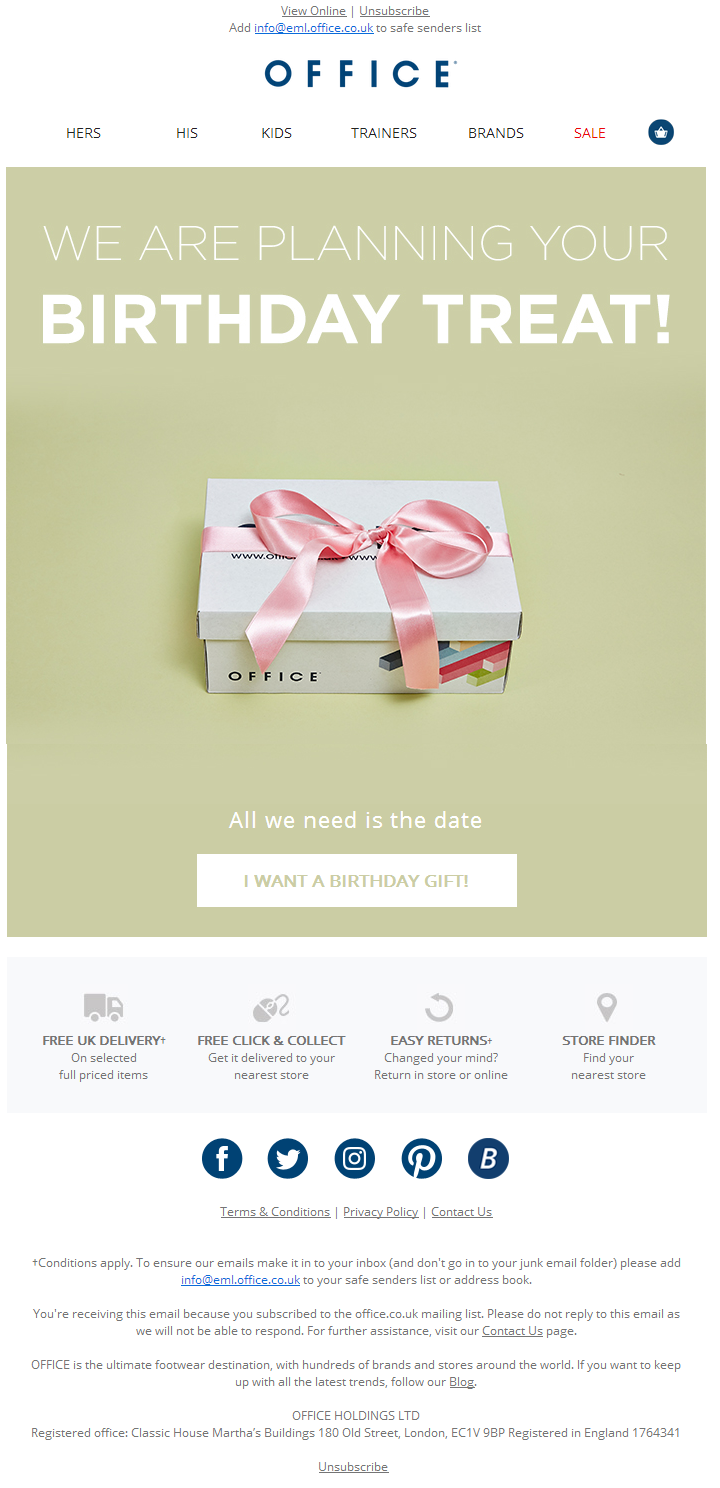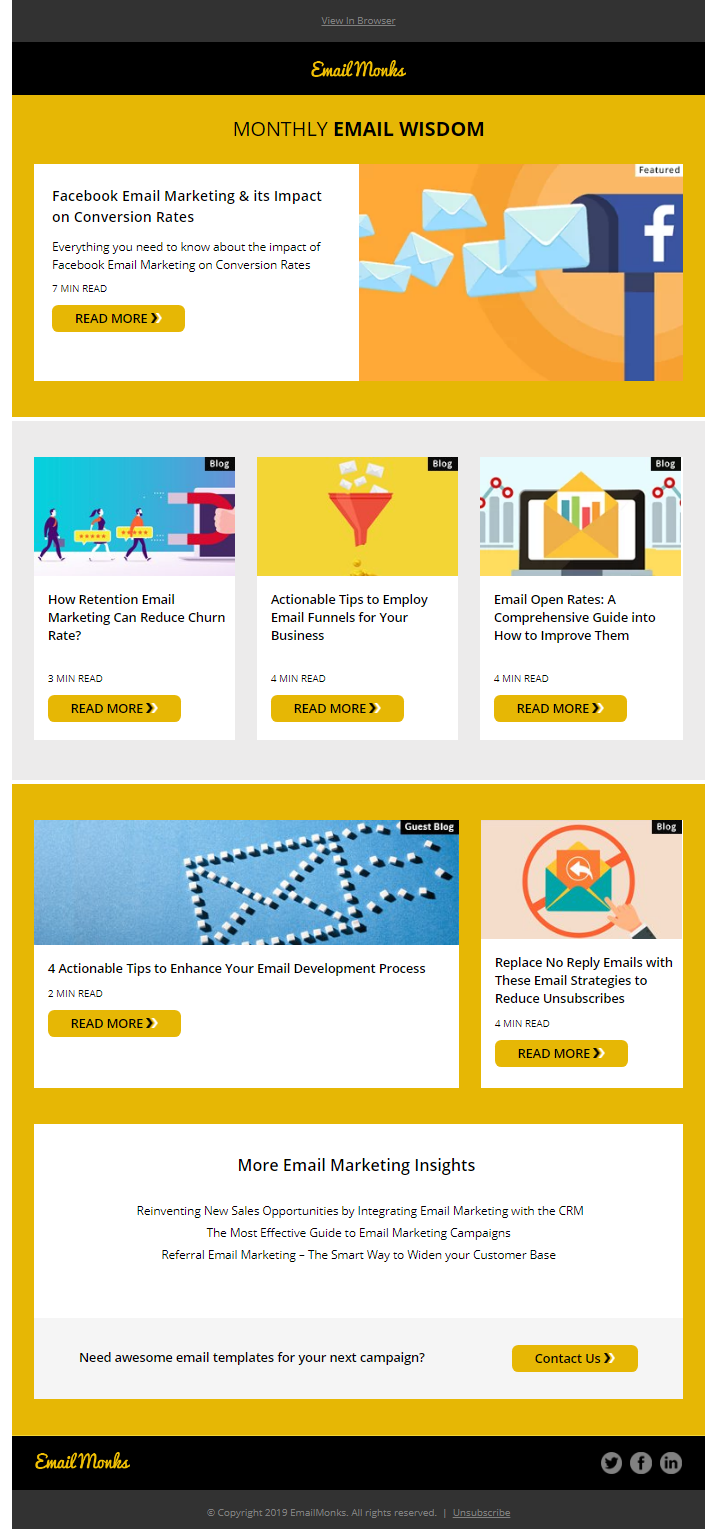If you are an email marketer, there is a good chance that you are already sending weekly or monthly newsletters to your subscribers. After all, it is the most popular format used by 83% companies. What is particularly bothersome is that far too many of the marketers stop right there and avoid sending any other email campaign. This is a huge mistake.
It is quite obvious that your subscribers want to read something beyond a newsletter and get useful information about your products or offerings. Therefore, you should send different types of emails that break the monotony and at the same time, deliver value to the subscribers.
You should strike the right balance between educational and promotional emails. Not doing so can tire out the subscribers and lead to unsubscribes or disengaged users. Reaching out to the subscribers with a perfect mix of different types of emails is the key to keeping them interested in your brand. Ultimately, it will enhance the open rates and click-through rates of your emails which will in turn yield higher conversions.
According to the message you wish to convey to your subscribers, there are various kinds of emails that you can choose to send.
1. Welcome email
A welcome email is the first email that your subscriber receives from you. It should make them feel welcomed and set the right expectations. You must thank them for subscribing to your brand and offer a scaffold to strike a conversation. Send a series of welcome emails that introduce your brand and make the subscriber look forward to learning more about you. Moreover, you can incentivize the new subscriber with an offer they cannot deny. It is also recommended that you request for additional information from the subscriber that will allow you to send more personalized content and relevant offers. This will, in turn, bring better conversions from your emails.
Office sends a series of three welcome emails to engage the new subscribers. The first one welcomes them and informs them about the USPs of their brand.
The second email features the top brands available in their store with catchy visuals.
The last one subtly asks the subscribers for their birthday to send exclusive birthday offers and leverage on occasion-based email marketing.
2. Newsletter
Newsletters generally follow a fixed schedule, for instance: Tuesday or Wednesday mornings every week. These emails will include recent posts from the company blog or curated content from the leaders in the industry. It can also inform the subscriber about the imminent conferences or webinars or other important updates. Just make sure, the content you share is relevant and delivers value to the subscribers.
EmailMonks sends a monthly newsletter to their subscribers to share the previous articles posted on the blog.
3. Standalone Email
Although newsletters have a significant stint, they can mask the main call-to-action because of the numerous links therein. It is quite likely that the subscribers click on a couple of links or simply skim through your email and forget about it. For marketers who wish to drive a particular action like subscription to their free trial or registration for the webinar, it is highly recommended to send a standalone email. Such emails are focused on a single goal and CTA. Consequently, your subscribers will be more inclined to take the action expected from them.
Clickz sends an invitation email for their upcoming webinar with a prominent CTA that will prompt the user to take action and register.
4. Lead Nurturing Email
Relevant emails sent over a time period of several days or weeks are included in lead nurturing emails. The objective of these emails is to convert the leads into customers with the help of an automated series of useful information. These emails generate 8% click-through rate when compared to generic emails that bring only 3% click-through rate.
As the emails are set as an automated workflow and triggered after the respective activity, they save time and effort of your team.
Let’s take a look at the nurturing emails by Process Street.
Once you sign up for a free trial on Process Street, they send out an email that lets the subscribers know how they can use the tool and encourages them to setup their first scheduled process with a clear CTA that stands out.
The next email calls attention to the popular examples of their processes and encourages the reader to visit their process library.
The third email notifies the email about the expiry of the trial version and persuades them to avail their premium version by adding billing details.
5. Transactional Email
Companies that have an operational website store must send transactional emails like receipts and order confirmations. Such messages have 8 times the open and click-through rate when compared to rest of the emails. To use these emails to their maximum potential, try to include product recommendations according to the user’s interests or past purchases.
Here is an example of transactional email sent by Uber when a user completes the journey.
6. Milestone Emails
Birthday emails have 481% higher transaction rate when compared to promotional emails. Your subscriber’s sign-up anniversary or company anniversary are other types of milestones emails that perform exceptionally well when used along with an exclusive offer. They can help to bring much better click-through rate and conversions.
issuu sets a top-notch example of a milestone email with an attractive header image that would entice the reader to learn more about their achievement.
7. Plain-text Emails
Although emails with attractive formatting are extensively used nowadays, plain-text emails cannot be considered obsolete. While HTML emails always come with a possibility of landing in the spam folder, plain-text emails spare you from that horror of deliverability issues. When you want to send event invitations, a survey or feedback requests, simple plain-text emails work better. You can send minimalistic emails with one or two images to amp up the open and click-through rate.
Given below is an example of a plain-text email created without any HTML codes.
8. Mobile-responsive Emails
A meagre of 59% companies reveal that mobile optimization is part of their email marketing efforts although 90% marketers consider it to be an important activity. The number of emails opened on mobile devices is increasing with each passing day and that has made it all the more important to design responsive emails that render well on every device and email client.
Here’s a typical example of how responsive emails look like on desktop and mobile devices.
9. Survey Email
Survey Emails can be used to request for feedback from subscribers. You can ask pertinent questions related to their previous interactions or purchases from your company. Asking for feedback makes the subscriber feel ap by the company. Make sure the email has just few questions as required. You can even offer something in return for their valuable feedback.
Tailor Brands sends out a distinctive email requesting for the customer’s feedback and offers 50% off in return.
Wrapping Up
Your subscribers have most probably signed up to several brands and you ought to deliver valuable content if you wish to cut through the noise. The emails discussed above will let you choose the right type of email based on the buyers’ journey and their interaction with the brand, thereby garnering better subscriber engagement and higher conversions.












